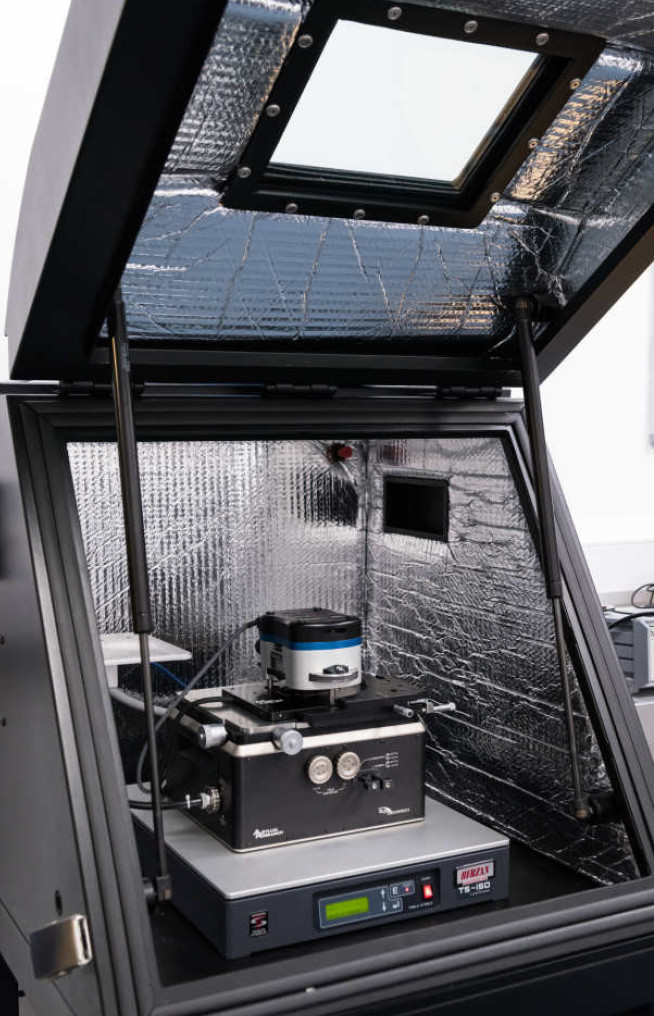Atomic Force Microscopy (AFM) is a technique widely used for probing the topography of surfaces at much higher magnifications than those achieved using a tradi-tional optical microscope. The AFM facility consists of two instruments; a Bruker Innova and an Asylum MFP-3D classic.

The Bruker Innova is available for routine analysis of samples and is able to probe the topography of the sur-face using standard tapping and contact modes, as well as electrical properties in conductive AFM (C-AFM) mode. A wide range of modes are available on the Asylum MFP-3D (shown on the right). In addition to standard topogra-phy we are able to investigate electrical (KPFM), mag-netic (MFM), piezoelectric (PFM) and nanomechanical properties (force mapping and AM-FM). There is also a liquid cell, electrochemical cell, bioheater (heating from ambient to 80°C, only in conjunction with liquid cell) and variable field module available for use with the MFP-3D, further broadening the range of experi-ments possible within the facility. Research within the facility covers a wide range of top-ics, including but not limited to: topographical imaging of thin films; topographical and electrical characterisation of 2D materials; characterisation of bio-active materials, and imaging of cells.